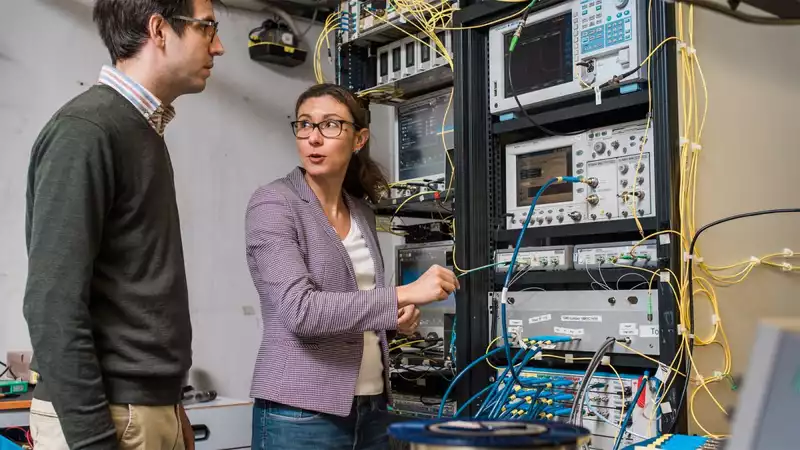A team of London-based researchers has set an astounding new record for data transmission over fiber-optic cable.
A team of University College London scientists led by Dr. Lydia Gardino has published new research in IEEE Photonics Technology Letters that promises to jump-start the development of next-generation broadband technology. Part of this research is a proof-of-concept data transmission that sets a new record for broadband speeds. This new record is twice the speed of currently deployed systems and nearly one-fifth faster than the previous world record held by Japanese researchers.
Team leader Dr. Gardino stated in a University College London news release: "While current state-of-the-art cloud data center interconnections can transfer up to 35 terabits per second, we are working on new technologies that will leverage existing infrastructure more efficiently. We are working on new technologies that make more efficient use of existing infrastructure, making better use of fiber optic bandwidth and enabling a world record transfer of 178 terabits per second. This is fast enough to transfer Netflix's entire streaming catalog in less than a second.
The researchers combined fiber amplification techniques with geometric shape signal optimization to move 178.08 terabits per second over a distance of 40 km (24.8 miles). Various amplification techniques coupled with optimizations that improve the signal-to-noise ratio increased the transmission bandwidth and improved the overall signal quality.
The first part of this equation is the use of wideband signals made possible by hybrid discrete Raman and rare earth doped fiber amplifiers. Rare-earth doped fibers incorporate rare-earth elements (neodymium, erbium, holmium, etc.) into the glass core of an optical cable to enable optical amplification over longer distances. These are combined with discrete Raman amplifier technology to enhance the power of the signal on the fiber optic line.
This fiber and amplifier technology is paired with signal optimization that improves signal-to-noise ratio by tailoring the system to use geometric shaping constellations, a combination of signals that maximizes the use of light passing through the fiber optic cable.
is a lot of jargon, but the new technology turns existing fiber-optic cables into thicker pipes for data, which are then sent out through much faster amplifiers. The result is the equivalent of 22.25 terabytes per second of broadband speed, which is more data than roughly 222 Ultra HD Blu-ray discs. To give some context to this figure, Google's fiber connection between Japan and the West Coast of the United States transfers 60 terabits per second and cost approximately $300 million to build.
This new technology not only promises a dramatic increase in bandwidth, but also offers hope that existing infrastructure can be upgraded in a cost-effective manner. Using this method, a single amplifier in a fiber-optic network could cost EGP 16,000 (US$28,894, according to Google.
While the application to large networks has the most immediate impact, the personal impact could still be enormous, from gigabit-speed Internet to homes to providing a faster backbone for 5G networks, to cheaper and faster for everything from Internet connectivity.










Comments